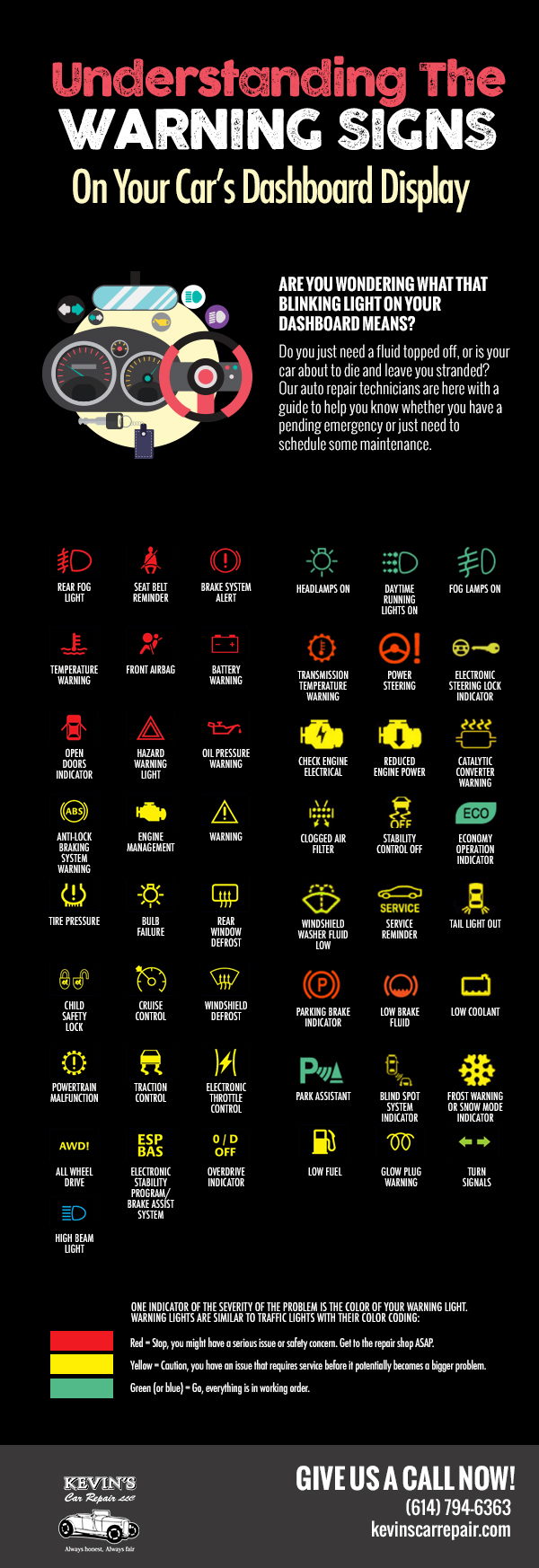Recognizing Your Cars And Truck'S Caution Lighting: What Do They Truly Mean?
Recognizing Your Cars And Truck'S Caution Lighting: What Do They Truly Mean?
Blog Article
Posted By-Samuelsen Dalgaard
When you lag the wheel, those radiant warning lights on your dashboard can be a bit difficult. Do you recognize what they're attempting to inform you regarding your automobile's health and wellness? Recognizing the relevance of these lights is important for your safety and security and the durability of your automobile. So, the following time among those lights turns up, would not you wish to decipher its message accurately and take the essential steps to resolve it?
Common Caution Lighting and Interpretations
Identify common caution lights in your auto and understand their definitions to make certain risk-free driving.
One of the most typical caution lights consist of the check engine light, which signifies concerns with the engine or discharges system. If this light comes on, it's essential to have your lorry checked promptly.
The oil pressure warning light indicates low oil stress, needing prompt interest to avoid engine damage.
https://www.aftermarketnews.com/advance-auto-parts-joins-forces-with-mechanic-advisor/ blinking battery light may suggest a damaged billing system, possibly leaving you stranded otherwise dealt with.
The tire pressure surveillance system (TPMS) light informs you to low tire stress, influencing car stability and fuel performance. Disregarding mouse click the following post might result in risky driving conditions.
https://motorvehiclechassis84062.blog-mall.com/30498839/curious-about-automobile-outlining-materials-discover-the-essential-tools-and-skilled-advice-that-will-certainly-raise-your-describing-abilities-as-a-novice indicates an issue with the anti-lock braking system, compromising your capacity to stop quickly in emergency situations.
Last but not least, the coolant temperature level warning light warns of engine getting too hot, which can lead to extreme damages if not solved swiftly.
Understanding these common caution lights will certainly assist you address problems without delay and keep safe driving conditions.
Significance of Prompt Attention
Comprehending the usual warning lights in your auto is only the primary step; the value of immediately attending to these warnings can not be emphasized enough to ensure your safety when driving.
When a warning light brightens on your control panel, it's your car's method of communicating a potential concern that requires attention. Disregarding these cautions can bring about a lot more extreme troubles in the future, compromising your safety and possibly costing you a lot more in repairs.
Trigger attention to advising lights can prevent failures and crashes. As an example, a blinking check engine light could indicate a misfire that, if left neglected, can trigger damage to the catalytic converter. Addressing this promptly can save you from a costly repair service.
Similarly, a brake system cautioning light could signal reduced brake liquid or worn brake pads, vital components for your safety and security when driving.
DIY Troubleshooting Tips
If you observe a warning light on your control panel, there are a couple of DIY repairing tips you can try before looking for professional help.
The very first step is to consult your automobile's handbook to understand what the certain warning light shows. Sometimes the concern can be as basic as a loosened gas cap activating the check engine light. Tightening up the gas cap may resolve the issue.
An additional usual concern is a low battery, which can set off various advising lights. Examining the battery links for corrosion and ensuring they're protected could deal with the trouble.
If a warning light continues, you can attempt resetting it by disconnecting the cars and truck's battery for a few mins and afterwards reconnecting it. Furthermore, inspecting your vehicle's fluid levels, such as oil, coolant, and brake fluid, can help repair warning lights related to these systems.
Verdict
Finally, recognizing your auto's caution lights is essential for maintaining your vehicle running smoothly and securely. By promptly resolving these informs and recognizing what they imply, you can prevent pricey repairs and prospective failures.
Remember to consult your cars and truck's guidebook for specific details on each alerting light and act accordingly to guarantee a trouble-free driving experience.
Keep educated, stay secure when driving!
